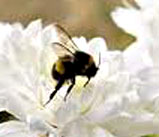Yesterday was a day of incident. All three of us were injured in different ways and I think it is Nature’s way of telling us it’s the end of term and time for a rest. We had a burn, a twisted muscle and a horrid scrape. This is how I treated them.
For information on what you should have in your First Aid Kit, click on this link.
INCIDENT 1 – Burn:
In the morning, I burned the palm of my hand really badly on a steam press, whilst assisting Lady Marjorie with her laundry. Those things get jolly hot and, having finished pressing sheets and moved to the normal iron, I forgot that it was still on and grasped it firmly with my right hand, to move it out of the way.
Treatment:
I immediately plunged my hand into a bowl of cold water and kept the cold tap running on it for at least five minutes. Every time it started to feel sore again, I put my hand back in the cold water. When I got home, I plastered it with Lavender Oil – 3-4 drops directly onto the burn, which heals burns super fast and is a cicatrizant which means it speeds up the healing process. I still have a big red welt across my palm, but it is quite minor in view of the initial burn.
INCIDENT 2 – Twisted Bicep Muscle and painful shoulder:
Boy the Elder fell off his bike and took the weight of his body on his arm but twisted it as he tried to avoid further injury from the bike.
Treatment:
A hot bath with 3 drops each of Lavender and Ginger oil to relax his whole body. Then a massage of the arm and shoulder with 5 drops of Comfrey Extract, 5 drops of Arnica Tincture and 2 drops of Ginger in 25ml of sweet almond oil. It will ache a bit tomorrow, but by the next day it should be fine.
INCIDENT 3 – Deep scrape on forearms, shock and bruising:
Boy the Younger fell 10 feet out of a tree, badly scraping both his arms on the way down and landing heavily at the bottom. I had asked him to bring Jeremiah the cat in so I could give him a flea treatment and BTY had decided to climb up a tree to get him down. The ivy had given way.
Treatment:
4 drops of rescue remedy directly onto the tongue. Then I bathed the cuts with cool boiled water into which I had put 5 drops of Lavender Oil. I then applied a sterile dressing pad to each arm, bandaged it firmly on and secured the edges with dressing tape. He asked for a plaster cast in case his arm should break later, but this request was politely declined. Just before bed, I put another drop of Lavender behind each ear to help him sleep and calm down. I also applied several generous cuddles throughout the course of the evening.
* * *
It is always a good idea to have a bottle of Lavender Oil in the house or in your handbag. It is antiseptic, antifungal, antibiotic and antiviral. It promotes healing particularly for burns and it also helps to reduce scarring. It’s calming, is useful in the treatment of shock, it helps reduce headaches and promotes deep sleep.
Also, according to a slightly suspect Aromatherapy book I once read, it is helpful in the treatment of myocardial infarct. I would not rely on this as a sole course of treatment. However it has since become a family joke. ‘Oh my god, I think I may be having a myocardial infarct!’ ‘Quick, fetch The Lavender!’
As the Vulcans say “May your day be free of incident”.






 It’s not just humans
It’s not just humans 
 Natural medicines seem to be very much in demand, judging by your visits to the Wartime Housewife
Natural medicines seem to be very much in demand, judging by your visits to the Wartime Housewife 


 explains the medicinal
explains the medicinal
